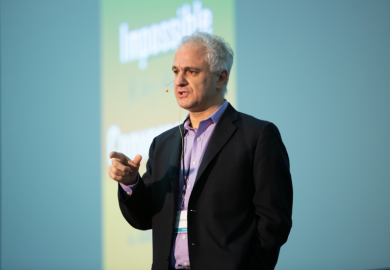For Paul Helm, religious belief is not insulated from general human inquiry by the walls of some fideistic ghetto.
In the first chapter of Faith and Reason , he insists that faith is open to discussion, but only in accord with what he calls "the James Principle". William James had asserted that "a rule of thinking that would absolutely prevent me from acknowledging certain kinds of truth, if these kinds of truth were really there, would be an irrational rule". In other words, belief in God cannot fairly be considered on the basis of atheistic presuppositions.
For Helm, belief involves not only cognitive judgements but also judgements concerning the needs and ideals of the believer. He distinguishes between "thin" and "thick" belief. The former is belief of an abstract kind, such as the Epistle of James assigns to the demons who "believe - and shudder" (James ii, 19). Thick belief embraces a fiducial element, involving trust in the God to whose existence the mind assents. Here we are close to the concept of faith, which involves both belief and trust.
Rationality is to be understood in a similarly wide sense, not only dealing with matters of fact about oneself and one's situation, but also involving a practical kind of rationality concerned with the attainment of desired ends.
Rationality has implications not only for belief but also for action. It has a significant person-relative aspect to it. Helm concludes that "it is not a necessary condition for conflicting beliefs being rationally held that the differences be settleable in principle by rational means". He is certainly not denying the existence of truth, but his recognition of the way in which beliefs are actually formed and held leads him to acknowledge that practice involves elements of pragmatism and personal perspective.
Helm discusses in considerable detail two broad views of faith. One he calls the evidential deficiency view, in which trust makes up what may be lacking by way of evidence. He sees Richard Swinburne (a principal conversation partner throughout the book) as being a leading contemporary proponent of this view of the role of faith.
Helm's own position is what he calls evidential proportion: "Strength of belief ought to conform to the evidence for the proposition in question, to seek to conform itself in strength to its reasonableness." It follows from this that faith is not a package deal, but there may be degrees of belief depending upon degrees of evidence.
In a final chapter, Helm considers the second-order question of belief about belief, distinguishing my belief from my belief about my belief.
In theological terms, this relates to the matter of assurance. He quotes a remark by John Oman to the effect that Methodists know that they have religion but fear that they may lose it, while Presbyterians know that they cannot lose it but fear that they have not got it. As in the other chapters, Helm's chief concern is the philosopher's task of clarifying the language being used on the different sides of the discussion.
The argument of Faith and Reason is quite dense, requiring the reader to endeavour to hold in mind many small distinctions. Such careful treatment, while professionally desirable, does not make for altogether easy reading by the interested non-professional.
Helm tells us that he thinks that the philosophy of religion must not be conducted with too abstract or minimalist a concept of religion in mind, and that is why he has centred his argument largely on the Christian tradition. Many readers might have welcomed a treatment even more focused on the particular.
The Revd John Polkinghorne was formerly president of Queens' College, Cambridge.
Faith and reason
Author - Paul Helm
ISBN - 0 19 823845 2
Publisher - Oxford University Press
Price - £25.00
Pages - 185
Register to continue
Why register?
- Registration is free and only takes a moment
- Once registered, you can read 3 articles a month
- Sign up for our newsletter
Subscribe
Or subscribe for unlimited access to:
- Unlimited access to news, views, insights & reviews
- Digital editions
- Digital access to THE’s university and college rankings analysis
Already registered or a current subscriber? Login



